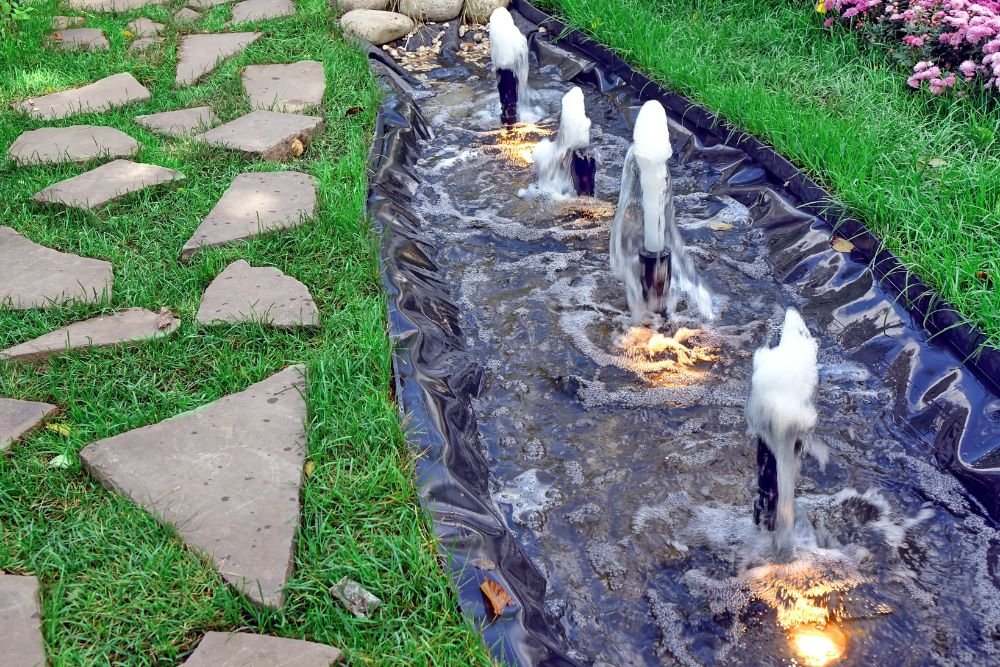
During the process of determining assets, it's crucial to factor in potential environmental threats. One prominent factor is the risk posed by liners used in waste containment facilities. These liners are designed to prevent contamination of hazardous materials into surrounding groundwater. However, over time, liners can become compromised, leading to potential environmental pollution. Therefore, a comprehensive assessment of liner risk is crucial for achieving an accurate and reliable asset valuation.
Environmental Liners: A Factor Influencing Loan Underwriting Decisions
When lenders evaluate loan applications, they carefully assess a multitude of factors to determine the risk associated with Sell your home Fort Lauderdale providing financing. Among these factors, the presence or absence of environmental liners can significantly impact underwriting decisions. environmental liners are crucial components in waste containment systems, protecting surrounding soil and groundwater from contamination. Lenders recognize the potential liability associated with projects lacking adequate liner protection.
- Inadequate liners increase the risk of leaks, potentially leading to costly cleanup efforts and legal liabilities.
- Projects without proper environmental safeguards may face regulatory scrutiny, delays, or even permit denials.
Assessing Environmental Liner Impacts on Property Value and Financing
The impact of environmental factors on property prices is a complex issue that can significantly influence financing options. Measuring the precise magnitude of these impacts can be complicated, as it involves considering a wide range of variables. However, understanding this connection is important for both sellers and lenders. Environmental problems can negatively impact property values, which in turn modifies the rates of financing.
- In essence, properties located near contaminated sites may suffer from reduced values, making it problematic to secure favorable financing options.
- Conversely, properties that have implemented green practices may command higher property values and attract more positive financing terms.
{Therefore, it's important forinvestors to conduct thorough investigations regarding the potential risks of a property before making any purchasing agreements. This will help them make informed decisions associated with real estate investments.
Addressing Environmental Liner Liability: Implications for Lending Practices
In the contemporary landscape of lending institutions, understanding and mitigating environmental liner liability has become urgently important. Lenders must carefully consider potential environmental risks associated with applicant's facilities, particularly those involving toxic materials. Failure to do so could result in substantial financial risk for lenders, ultimately impacting their stability.
Establishing robust environmental due diligence protocols is crucial in this context. Lenders should include rigorous screening of environmental reports and conduct thorough site assessments to detect potential liabilities. Moreover, lenders can consider financial guarantees to minimize their liability. By systematically addressing environmental liner liability concerns, lenders can enhance the sustainability and profitability of their operations in the long run.
Thorough Reviews and Environmental Protection: Guiding Responsible Lending Decisions
When evaluating loan applications, lenders/creditors/financial institutions must prioritize both financial viability and environmental responsibility. Conducting/Performing/Completing thorough due diligence is essential to assess the risks/potential hazards/challenges associated with a project, particularly/especially/primarily when it involves land usage/development/transformation. Environmental liners play a crucial role in mitigating potential harm to ecosystems and public health by containing hazardous materials/waste/substances within designated areas. By integrating environmental assessments and liner requirements into their due diligence processes/procedures/methodologies, lenders can contribute to sustainable development and minimize the negative impacts/environmental footprint/ecological risks of financed projects.
- Consider/Evaluate/Assess the project's potential impact on local ecosystems, including water resources, soil quality, and biodiversity.
- Ensure/Confirm/Verify that appropriate environmental liners are specified/integrated/included in the project design to prevent leaks/migration/contamination of surrounding areas.
- Review/Scrutinize/Examine environmental impact assessments and permits to ensure compliance with relevant regulations and standards.
Environmental Liners: Impacting Real Estate Funding
In the dynamic landscape of real estate finance, environmental considerations are increasingly taking center stage. , In particular , environmental liners, used to prevent the leakage of harmful substances into surrounding zones, play a critical role in shaping investment approaches. Developers and investors are now evaluating projects with heightened consciousness to environmental effects, and liners have become a key benchmark of sustainability. This increased focus on environmental protection is influencing real estate finance, as projects that incorporate liners are often selected for financing due to their reduced risk.
- , Furthermore
The implementation of liners promotes a project's resilience by mitigating potential environmental contamination. , Therefore, lenders and investors are increasingly rewarding projects that demonstrate a commitment to environmental regulations through the utilization of liners. This trend is forecasted to continue, as the urgency for sustainable real estate practices grows.